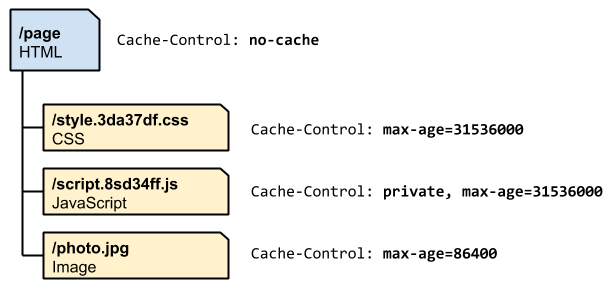前言
我们平常写vue的组件时,一般都是用的是模版,这种方式看起来比较简洁,而且vue作者也推荐使用这个方式,但是这种方式也有一些它的弊端,例如模版调试麻烦,或者在一些场景下模版描述可能没那么简单和方便。
下面我们要讲的是如何在vue里面写jsx,知道react的人应该都知道jsx,jsx的一个特性就是非常灵活,虽然有的人觉得jsx很丑陋,把逻辑都写到模版的感觉,但萝卜青菜各有所爱,适合自己适合团队的就是最好的。
在使用jsx之前我们需要安装一个babel插件(babel-plugin-transform-vue-jsx )
安装方式:
npm install\
babel–plugin–syntax–jsx\
babel–plugin–transform–vue–jsx\
babel–helper–vue–jsx–merge–props\
babel–preset–es2015\
—save–dev
然后再.babelrc里面添加:
{
“presets”: [“es2015”],
“plugins”: [“transform-vue-jsx”]
}
接着我们就可以愉快地在vue里面编写jsx了。
Test.vue
<script>
export default {
props: [‘onClick’, ‘isShow’],
data() {
return {
test: 123
};
},
render() {
return (
<div class=“test” onClick={ this.onClick }>
{ this.test }
{ this.isShow + ” }
</div>
);
}
}
</script>
可以看到我们把jsx写在了render方法里面,render方法是vue2.0才支持的,用来提供对虚拟DOM的支持,也就是说只有vue2.0才支持jsx语法转换。
这里要注意的一点是vue里面编写jsx和在react里面的jsx语法还是有一点不一样的。
一下是一段覆盖大部分语法的vue jsx代码:
render (h) {
return (
<div
// normal attributes or component props.
id=“foo”
// DOM properties are prefixed with `domProps`
domPropsInnerHTML=“bar”
// event listeners are prefixed with `on` or `nativeOn`
onClick={this.clickHandler}
nativeOnClick={this.nativeClickHandler}
// other special top-level properties
class={{ foo: true, bar: false }}
style={{ color: ‘red’, fontSize: ’14px’ }}
key=“key”
ref=“ref”
// assign the `ref` is used on elements/components with v-for
refInFor
slot=“slot”>
</div>
)
}
可以看到DOM属性要加domProps前缀,但这里lass和style却不需要,因为这两个是特殊的模块,而且react的class用的是className,vue却用的class。事件监听是以“on”或者“nativeOn”为开始。
实际上vue2.0的模版最后都会被编译为render方法,所以模版声明的组件和jsx声明的组件最后都是一样的。
上面的jsx最后会被编译成下面这样:
render (h) {
return h(‘div’, {
// Component props
props: {
msg: ‘hi’
},
// normal HTML attributes
attrs: {
id: ‘foo’
},
// DOM props
domProps: {
innerHTML: ‘bar’
},
// Event handlers are nested under “on”, though
// modifiers such as in v-on:keyup.enter are not
// supported. You’ll have to manually check the
// keyCode in the handler instead.
on: {
click: this.clickHandler
},
// For components only. Allows you to listen to
// native events, rather than events emitted from
// the component using vm.$emit.
nativeOn: {
click: this.nativeClickHandler
},
// class is a special module, same API as `v-bind:class`
class: {
foo: true,
bar: false
},
// style is also same as `v-bind:style`
style: {
color: ‘red’,
fontSize: ’14px’
},
// other special top-level properties
key: ‘key’,
ref: ‘ref’,
// assign the `ref` is used on elements/components with v-for
refInFor: true,
slot: ‘slot’
})
}
这也意味着两种形式的组件是可以相互引用的。
有时候我们难免会在模版里引入jsx编写的vue组件或者在jsx编写的vue组件里引入模版组件,这里还是有些需要注意的事项:
1.在模版里面引入jsx的组件,可以通过components引用,另外props的编写从驼峰式改为连接符:
<template>
<div class=“wrapper”>
<Test :on-click=“clickHandler” :is-show=“show”></Test>
</div>
</template>
<script>
import Test from ‘./Test.vue’;
export default {
name: ‘hello’,
components: {
Test
},
data() {
return {
msg: ‘Welcome to Your Vue.js App’,
show: true
};
},
methods: {
clickHandler(){
this.show = !this.show;
}
}
};
</script>
2.在jsx里面引入vue模版组件,这里没有什么要注意的,除了连接符式的属性要转换成驼峰式,还有一个需要注意的是指令,如果用了jsx,那么内置的指令都不会生效(除了v-show),好在内置指令大部分都可以用jsx描述。那么自定义指令要怎么用呢?
自定义指令可以使用“v-name={value}”语法,如果要支持指令参数和modifier可以用“v-name={{ value, modifier: true }}”语法:
<script>
import Vue from ‘vue’;
Vue.directive(‘my-bold’, {
inserted: function (el) {
el.style.fontWeight = 900;
}
})
export default {
props: [‘onClick’, ‘isShow’],
data() {
return {
test: 123
};
},
methods: {
afterLeave() {
console.log(‘afterLeave’)
}
},
render() {
const directives = [
{ name: ‘my-bold’, value: 666, modifiers: { abc: true } }
];
return (
<transition onAfterLeave={this.afterLeave} name=“fade”>
<div class=“test” onClick={this.onClick} v–show={ this.isShow } v–my–bold>
{this.test}
{this.isShow + ”}
</div>
</transition>
);
}
}
</script>
<style>
.fade-enter-active, .fade-leave-active {
transition: opacity .5s
}
.fade-enter, .fade-leave-to {
opacity: 0
}
</style>
我们还可以用原生vnode的数据格式使用自定义指令:
const directives = [
{ name: ‘my-dir’, value: 123, modifiers: { abc: true } }
]
return <div {…{ directives }}/>
扩展
如果有人觉得在vue组件里面要写data,props,computed和methods不够优雅,可以参考下这个插件vue-class-component,它能让你使用ES6的class和ES7的装饰器编写vue组件。
相关链接:
babel-plugin-transform-vue-jsx(https://github.com/vuejs/babel-plugin-transform-vue-jsxhttps://github.com/vuejs/babel-plugin-transform-vue-jsx)
- 随机文章
标签云集
-
app设计
APP设计参考
jupyter
adobe
android
k8s
JavaScript小技巧
css
Java
设计教程
swoole
electron开发
iphone x
zabbix
ios
logo
页面设计
docker命令
python
分布式
nginx
Redis
MySQL小知识
前端开发
webpack
mysql
docker小技巧
docker的使用
APP UI设计
前端技术
移动端识别
mysql优化
golang小技巧
ui设计
大数据可视化
react
javascript
网页设计
python插件
数据库
vue小技巧
php
设计灵感
linux
树莓派
docker
交互设计
vue
图标设计
PHP小技巧









